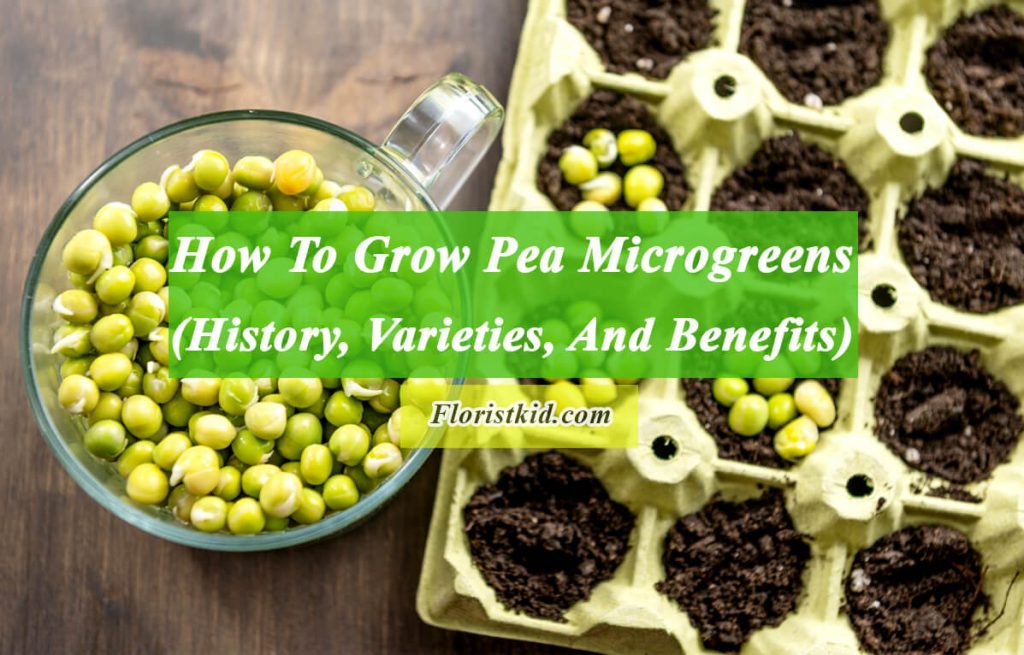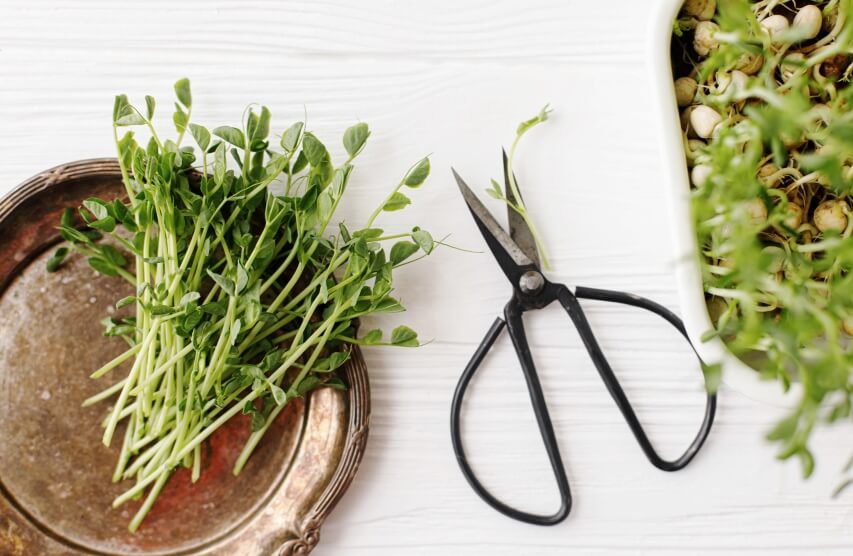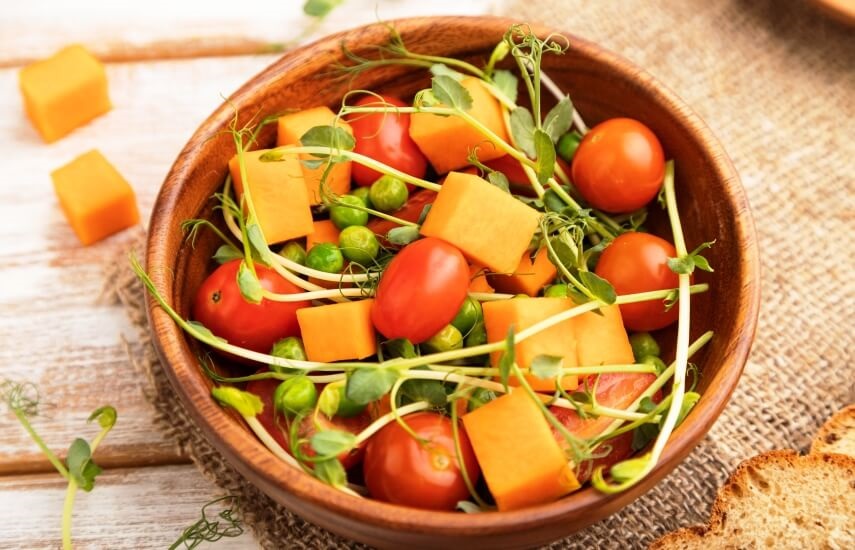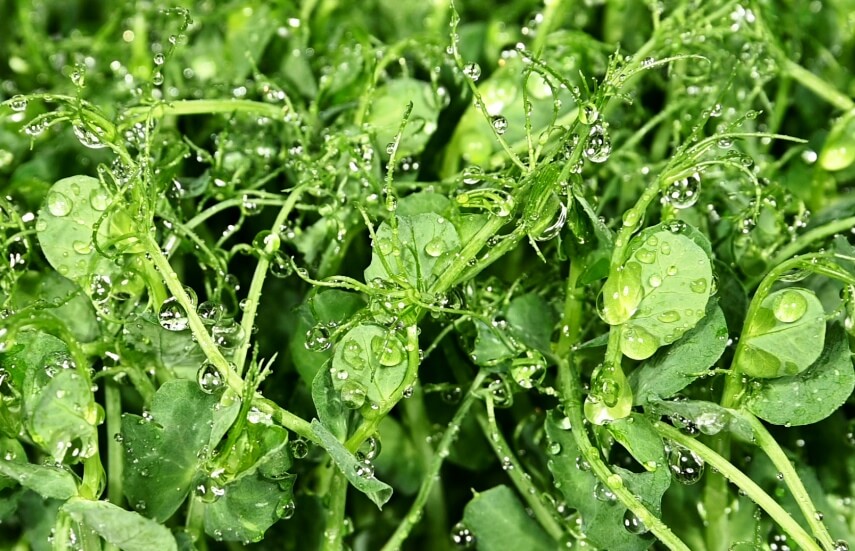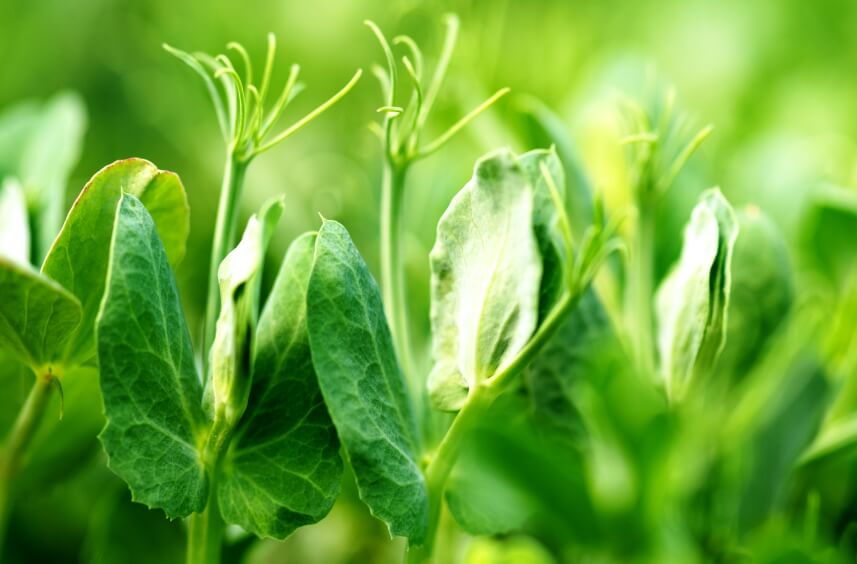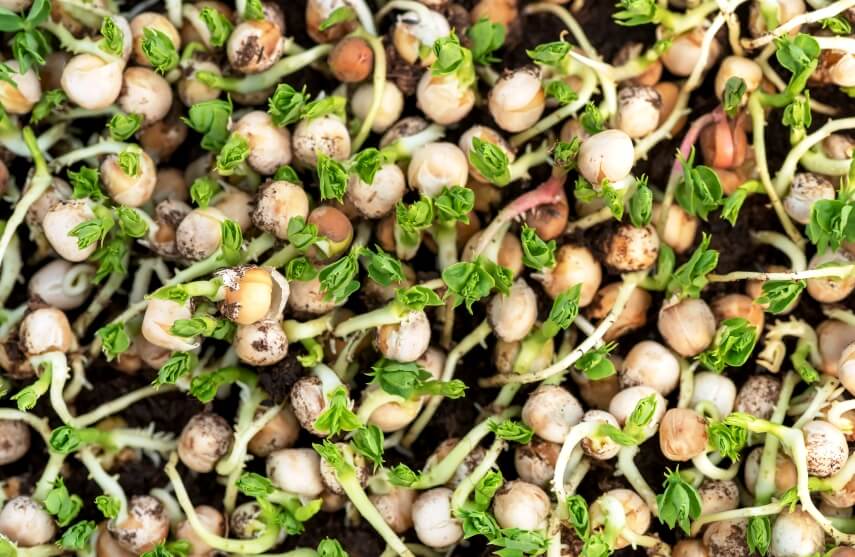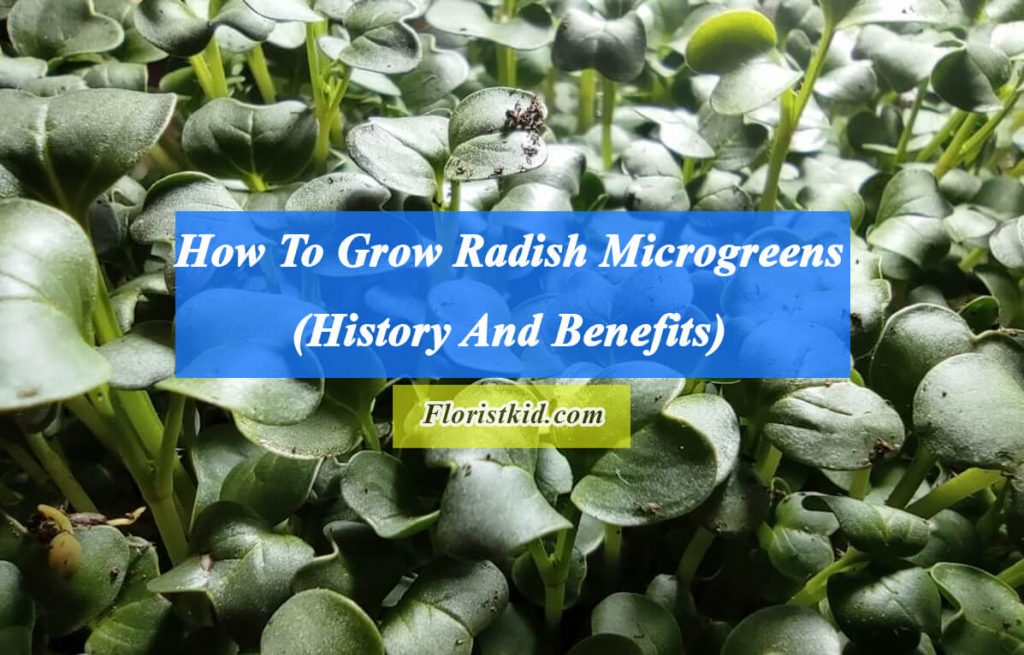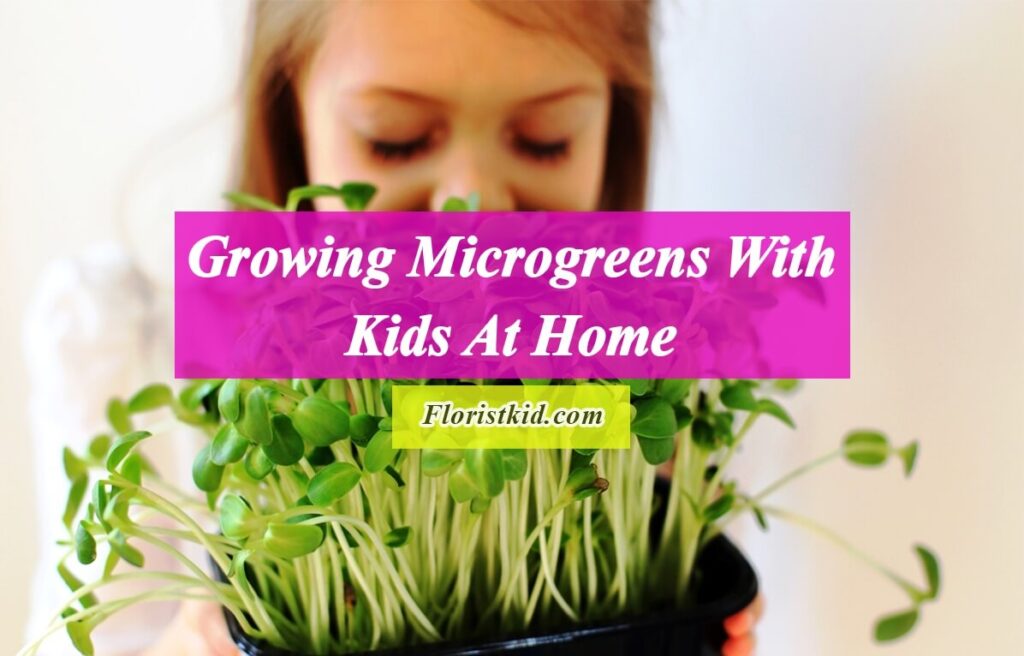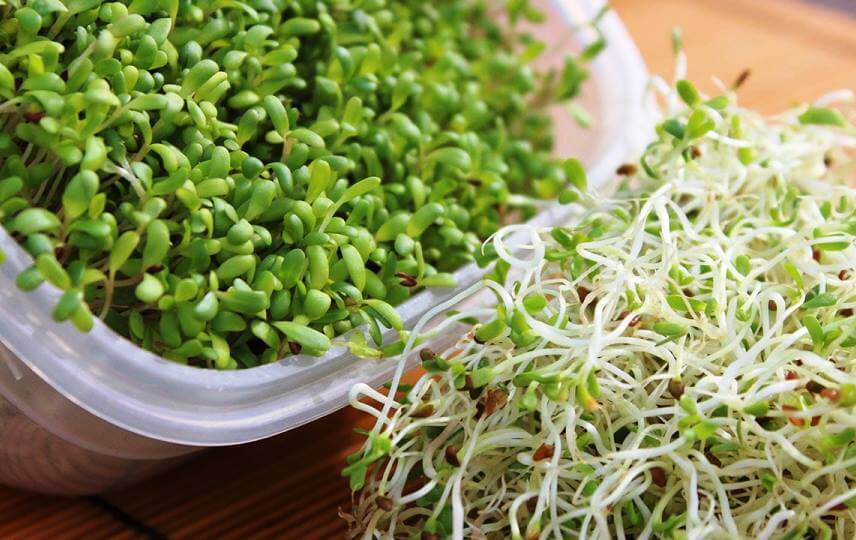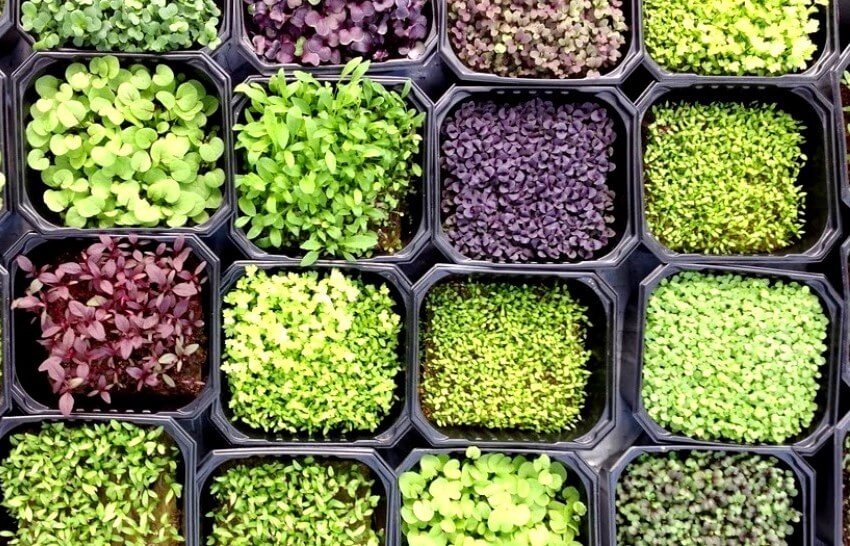Peas are one of the most popular microgreens for chefs and families, as they are simple to grow and add a vibrant, crunchy taste of spring to any salad.
Pea microgreens, like snow peas, have a similar flavor to full-grown peas and are recognized for being sweet. They are high in anti-inflammatory vitamins that help to improve cardiovascular health. Weight reduction has also been linked to pea microgreens, owing to their high fiber content.
If Like to know more about microgreens, check these articles:
<<What Are Microgreens >> and <<Fastest And Easiest Microgreens To Grow>>
Pea microgreen varieties
Snow peas and sugar snap peas are the most often utilized peas varieties for microgreens. These varieties produce sweeter microgreens that are ideal for blending into smoothies or adding to dishes, as well as having very low amounts of potentially harmful neurotoxins.
Pea History
Peas have a long and interesting history. They have significantly impacted the world for such a small vegetable. As a punishment, Thor sent dragons to fill the village wells with peas, according to Norse legend. Because the dragons were sloppy in their work, they dropped peas on the ground, which sprouted and grew.
To honor (and avoid upsetting) Thor, the Norse people grew peas and only ate them on his birthday (Thursday). Peas were popular in French and British cooking throughout colonial periods in the United States, and they performed an important part in sustaining nourishment. They helped to close the gap between the rich and the poor. Peas, whether canned, frozen, or fresh, have remained a staple in the American diet.
Pea microgreens overview
| Family | Leguminosae (Fabaceae) |
| Recommended Varieties | Snow peas, Sugar snap and Warf Sugar Grey |
| Nutrition | Vitamin B1, C, niacin, iron, zinc, magnesium and Protein |
| Average days to germinate | 3 to 5 days |
| Average days to harvest (after germination) | 5 to 7 days |
| Difficulty | Easy |
Nutrition facts and health benefits of pea microgreens
Vitamins and nutrients abound in freshly gathered pea microgreens. These micro plants are low in calories and high in protein.
Incorporating pea microgreens into your regular diet will help you get more Vitamin C and Iron without adding too many calories from carbohydrates. Compared to the serving weight, the fiber content is also relatively high in this microgreen.
Vitamin C helps the immune system
A single cup of pea microgreens contains 50 percent of an adult’s daily Vitamin C requirement. This vitamin can assist in safeguarding an immune system that has been weakened by stress, smoking, drinking too much alcohol, or being overweight.
Vitamin C can also assist in preventing infections and pneumonia when you have a cold. Increased vitamin C levels in the blood can even aid in lessening the risk of stroke. Early research suggests that Vitamin C helps reduce the incidence of cancer and cardiovascular disease, which may be due to the vitamin’s anti-inflammatory characteristics.
Vitamin C should be obtained naturally from ingredients that are just gently cooked or Eaten raw, which makes pea microgreens an excellent daily supply.
Iron helps prevent anemia and deficiency.
Iron is a mineral that is found in every cell of the body. It is used to transport oxygen as well as to initiate enzyme activities. Anemia can result from iron deficiency, which is a dangerous disorder.
When red blood cells drop to hazardous levels, anemia develops due to an untreated iron shortage. Anemia can cause dizziness, thirst, confusion, weakness, hair loss, shortness of breath, and persistent fatigue or exhaustion.
Pea microgreens provide a major boost to the body, which helps to prevent iron shortage and anemia. Pea sprouts offer 10% of the daily iron requirement in one cup serving. Pea microgreens, combined with a well-balanced diet, may help keep your iron levels in check.
Protein is abundant in pea microgreens.
Pea shoots are one of the top vegetable protein sources in terms of weight. Two grams of protein, equal to 1/3 of an egg, may be found in a cup of microgreens, which is relatively small and easy to ingest.
Pea microgreens may become an important secondary source of natural protein when following a raw vegan or vegetarian diet, minimizing your dependency on smoothies, carbohydrate-rich legumes, or processed soy sources.
Phytoestrogens are abundant in pea microgreens. Phytoestrogens May Help Prevent Cancer and Other Serious Diseases. Researchers have discovered that phytoestrogens’ anti-carcinogenic and anti-inflammatory qualities could block cancer on a cellular level, which bodes well for future anti-cancer research.
Pea microgreens also include fiber, which is believed to be a cancer fighter. Recent research has found that women who consume a fiber-rich diet have a decreased risk of breast cancer.
How to grow Pea microgreens
To soften this big seed, soak it in water overnight and drain it. Sow thickly for more yields—as much as 12 ounces per sowing tray is possible. It takes three to five days for seeds to germinate. When shoots reach 2 to 3 inches in about a week, they are ready to harvest.
Peas prefer lower temperatures. In the summer, so grow micro peas in the shade or partial shade to keep their dark green color and pleasant flavor. Allowing stems to extend causes them to grow woody, so if the crop gets ahead of you, remove the shoots higher on the stem. Keep in mind that peas are among the most popular free food among small birds and mice.
The procedure of growing Pea microgreens is almost similar to other microgreens. Read the <<Growing Microgreens >> article to learn more about the general method for growing microgreens.
Pea microgreens Growing Tips
Growing tips
- Cover seeds with soil, ensuring they are not exposed until they have been watered.
- Peas are a cool-season crop. Tendrils will be sweet, tiny, and compact throughout the spring and fall (3 to 4 inches).
- Keep them in the shade if you are growing them in the summer. Pea shoots lose their dark color and delicious flavor if they are not shaded.
- For creatures, sprouted pea seeds are a wonderful treat. Keep them covered and off the ground if you are growing them outside.
Harvesting Tips
- If the stem becomes too large, cut it off high on the stem.
Washing Tips
- Just a short rinse would be enough.
- Because pea tendrils repel water, they dry quickly.
Possible Challenges
- It’s a rodent’s favorite.
- Summer heat can have an impact on plant development and flavor.
How to consume pea microgreens
Snap and snow pea sprouts or microgreens are better to be eaten uncooked and from natural sources. Look for the phrase veganic on the box if you buy fresh pea microgreens from a farmer’s market or even a specialty grocer. If you purchase directly from a producer, inquire about their growing practices to discover whether the product is safe and natural.
Buying veganic pea sprout microgreens from small niche farmers ensures that you obtain all of the health advantages of pea microgreens without worrying about unethical activities or contamination.
Conclusion
Pea microgreens are an excellent crop to grow for yourself or to sell. They are simple to harvest and prepare and make a lovely garnish for any salad. In the winter, their fresh spring flavor is a pleasure. Peas like a cooler climate, so they lose some of their taste in the summer.
Peas are popular on dinner tables worldwide because of their health benefits. They contain vitamins B1, C, niacin, iron, zinc, and magnesium and are a healthy source of carbs and protein.

